Disclosure: As an Amazon Associate I earn from qualifying purchases.
We all want to see the world a little closer. Maybe you want to see a bird in a tree, read a sign far away, or get a better view at a concert. A monocular can do this for you. But with so many choices, it is hard to know which one is worth your money.
For making a perfect decision, we tested six of the most popular budget monoculars. We took them hiking, used them at dusk, and even tested them in the rain, all to find the best combination of a clear picture, a comfortable feel, and a strong build.
This guide will walk you through every step of our testing. We will show you what we did, how each monocular performed, and help you decide which one is the perfect fit for your adventures.
A Quick Look at Top 6 Budget Monoculars
Image | Product | Main Strength | Rating | Price |
1 | Sharpest Image, Best Warranty | 4.8/5 | ||
2 | Bright, Great Phone Adapter | 4.3/5 | ||
3 | Very Powerful, Very Bright | 4.2/5 | ||
4 | Unique Grip, Very Small | 4.1/5 | ||
5 | Good in Dim Light, Tripod Ready | 3.9/5 | ||
6 | Can Change Magnification | 3.8/5 |
Your Guide to Choosing the Right Budget Monocular
Before we get to the reviews, let’s learn the language of monoculars. Knowing what the numbers mean will help you understand why we picked our winners.
Key Features That Matter
- Field of View: This is how wide an area you can see through the monocular. It is like the difference between looking through a tube and looking through a window. A wider field of view is better for following moving animals or watching sports.
- Close Focus: This is the closest distance you can be to an object and still focus on it. If you like looking at butterflies or insects, you need a very short close focus distance.
- Lens Coatings: Look for the words “Fully Multi-Coated.” This means all the glass surfaces have special layers that reduce reflections. This makes the image much brighter and clearer. It is one of the most important signs of a quality monocular.
The 5 Things to Think About Before You Buy
- What will you use it for? (Bird watching, travel, concerts?)
- How much power do you need? Remember, more power can mean a shakier image.
- Will you use it in low light? If yes, you need a larger objective lens (the second number).
- What features are important? Do you need it to be waterproof? Do you want to attach it to your phone?
- How does it feel? A monocular should feel comfortable in your hand.
Best Budget Monoculars: Our Hands-On Review
Now, let’s get into the details. Here is our hands-on review of every monocular we tested:
1. Vortex Optics Solo 10×36: The Best All-Around Monocular
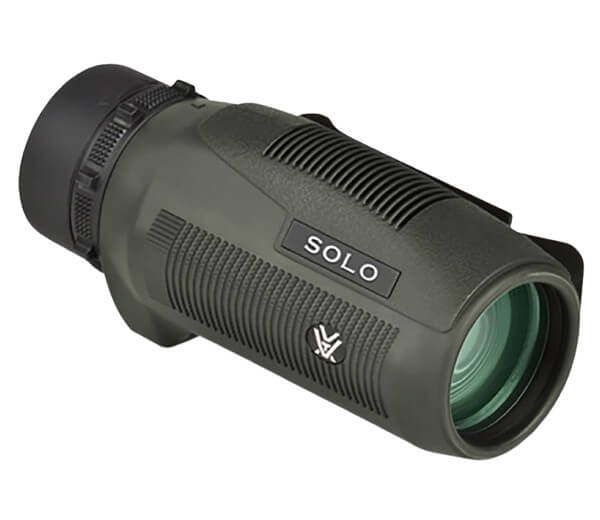
The Vortex Solo is our top choice. It feels like a tool that will last for years. From the moment you hold it, the quality is clear. The rubber coating gives you a secure grip, and it is the perfect size to drop in a jacket pocket.
The Good and The Bad
- Pros: Unbeatable warranty, very sharp picture, tough build, perfect size.
- Cons: No smartphone adapter included, 10x power may be low for some.
Design and Feel: Built for the Outdoors
We tested the build by carrying it on multiple hikes. The rubber armor never felt slippery, even with sweaty hands. The focus wheel turned smoothly and precisely. It is nitrogen purged, which means it is waterproof and more importantly, fog-proof. We left it in a cool car and then took it out into warm, humid air, and no fog formed inside the lenses. The utility clip is strong and lets you attach it to a backpack strap for quick access.
Picture Quality: Where the Vortex Wins
This is where the Vortex Solo truly shines. We looked at a detailed power line against a bright sky. The Solo showed almost no color fringes, just a clean, sharp line. When we looked at trees in the distance, the center of the image was extremely sharp. The edges of the picture were also very good, with only a small amount of softening. The colors looked natural and true to life.
From Birds to Bad Weather
The close focus distance is good, allowing us to clearly see a spider on its web from about eight feet away. While the 36mm lens is not the biggest, the fully multi-coated lenses make the most of the light. The image remained bright and usable well into the evening. It is not a night vision device, but for most daytime and early evening activities, it is perfectly bright.
Who Should Buy the Vortex Solo?
This is the best monocular for a hiker, bird watcher, or sports fan who wants a reliable, high-quality tool. It is for someone who values a clear picture and a durable product over having the highest magnification. The unlimited, unconditional warranty is a huge benefit—it means your investment is protected for life.
2. Gosky Titan 12×50: The Best for Smartphone Photos
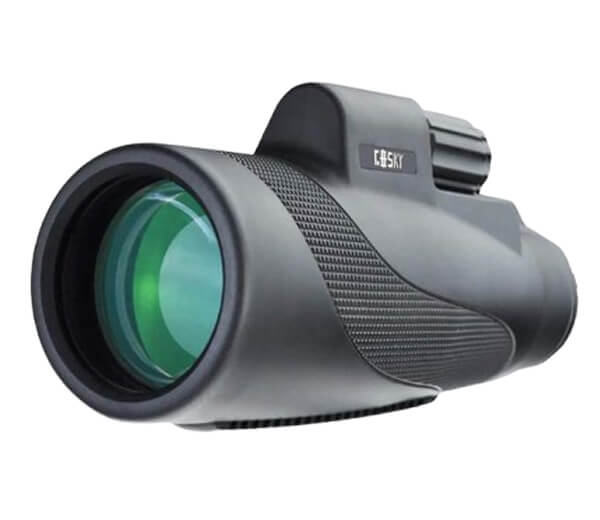
The Gosky Titan feels like a bigger, more powerful brother to the Vortex. The main reason to buy this monocular is its excellent smartphone adapter, which lets you take pictures and videos of what you see.
The Good and The Bad
- Pros: Great smartphone adapter, bright 50mm lens, good 12x power.
- Cons: Larger and heavier, not as pocket-friendly.
Design and Feel: Bigger but Still Comfortable
The Gosky Titan is noticeably bigger than the Vortex Solo. It will not fit in a tight pocket, but it comes with a case and a strap. The grip is comfortable and secure. The twist-up eyecup is great for people who wear glasses, as you can roll it down for a better view. Like the Vortex, it is IPX7 waterproof, meaning it can handle rain and even a quick, accidental drop in water.
Picture Quality: Bright and Powerful
The 12x magnification and 50mm objective lens make for a powerful combination. The image is bright, and you can see details further away. We noticed a little more color fringing on high-contrast edges compared to the Vortex, but it was not distracting. The center sharpness is very good, making it easy to identify distant birds or players on a sports field.
The King of Digiscoping
The included smartphone adapter is the best one we tested. It securely holds your phone and aligns easily with the monocular’s eyepiece. We were able to take clear pictures and videos of birds at a feeder. The process was simple and stable. The close focus is also good, making it useful for a variety of subjects.
Who Should Buy the Gosky Titan?
Choose the Gosky Titan if your main goal is to attach your phone and take pictures or videos through the monocular. It is also a great choice if you simply want more magnification and a brighter image than the Vortex offers and don’t mind the larger size.
3. Pankoo 12×60: The Most Power for Your Money
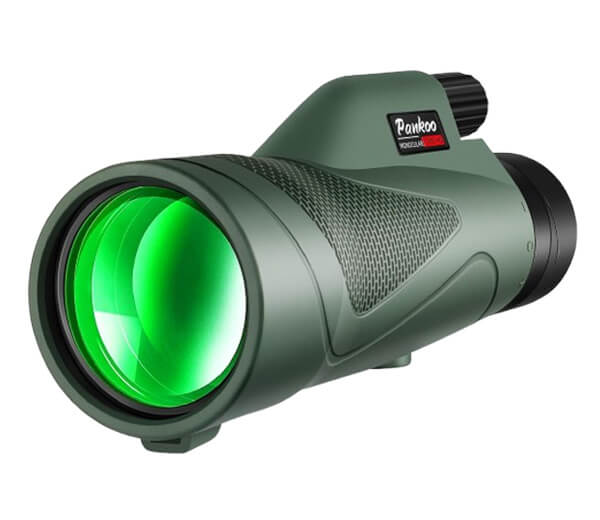
The Pankoo 12×60 promises a lot for a very low price. It has high 12x magnification and a huge 60mm objective lens. In many ways, it delivers, but there are some trade-offs.
The Good and The Bad
- Pros: Very high power, very bright image, includes a phone adapter and tripod.
- Cons: Noticeable color fringing, bulky and heavy, image quality is not as refined.
Design and Feel: A Large, Packed Box
The Pankoo is the biggest and heaviest monocular in our test. It feels solid, but the rubber armor does not feel as high-quality as the Vortex or Gosky. It comes with a smartphone adapter and even a small tripod, which is a great bundle for the price. You get a lot of accessories.
Picture Quality: Powerful but Flawed
The 60mm lens gathers a massive amount of light. In low-light conditions, the image was the brightest of all the monoculars we tested. The 12x power brings things very close. However, we found the optical quality to be a step below the Vortex and Gosky. When we looked at branches against the sky, we saw clear purple color fringes. The image was also not as sharp from edge to edge.
Bright but with Color Issues
For watching wildlife at dusk or in deep shade, the Pankoo’s brightness is a real advantage. You can see more when the light is low. However, the color fringing can be distracting when looking at high-contrast scenes. The included smartphone adapter works, but it is not as easy to align as the Gosky’s.
Who Should Buy the Pankoo?
The Pankoo is for the buyer on a tight budget who wants the highest possible power and the brightest image and is willing to accept some optical flaws to get it. It is a good “more bang for your buck” option, but you sacrifice some picture purity.
4. ROXANT Grip Scope: The Best for Easy Carrying
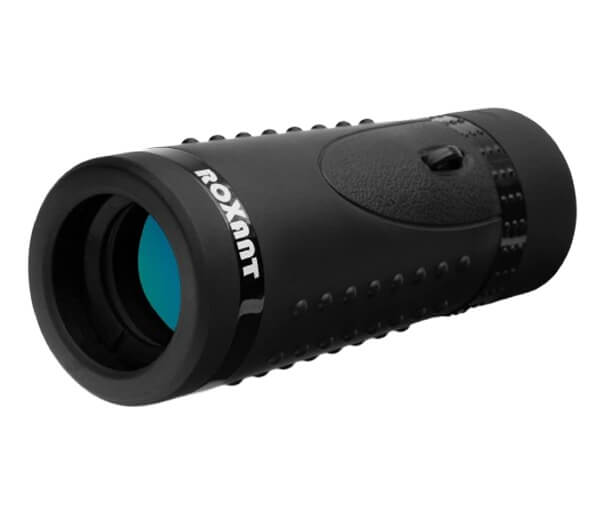
The ROXANT Grip Scope looks and feels different from every other monocular we tested. Its unique design is its biggest strength, but it also comes with a major limitation.
The Good and The Bad
- Pros: Very comfortable grip, extremely small and light, affordable price.
- Cons: Very low 6x magnification, not waterproof.
Design and Feel: A Unique and Comfortable Hold
We tested the ROXANT by carrying it in a pocket every day for a week. Its small size and light weight make it almost unnoticeable. The wide, molded grip is genuinely comfortable and makes it very easy to hold steady with one hand. It feels less like a precision tool and more like a comfortable extension of your hand. However, it is important to know that the product information does not claim it is waterproof or fog-proof like the others. This is a monocular for fair weather.
Picture Quality: Wide but Not Powerful
With only 6x magnification, the ROXANT does not bring things very close. What it offers instead is a very wide field of view. It feels like you are looking through a large window rather than a small tube. This is great for following action at a concert or getting a panoramic view of a landscape. The picture in the center is clear, thanks to its good lens coatings. But because of the low power, you will not see fine details from far away.
Perfect for Concerts and Parks
The wide view is excellent for watching sports or shows on a stage. You can see a large area without moving the monocular around too much. The close focus is also good for looking at flowers or other nearby objects. However, for birdwatching or any activity where you need to see details from a distance, the 6x power is a serious limitation.
Who Should Buy the ROXANT Grip Scope?
Buy the ROXANT if you want a tiny, lightweight monocular for casual use like concerts, sightseeing in cities, or carrying in your jacket pocket “just in case.” Do not buy it if you need to see things that are far away in detail, or if you plan to use it in the rain.
5. Firefield Siege 10×50: A Solid Tool for Low Light
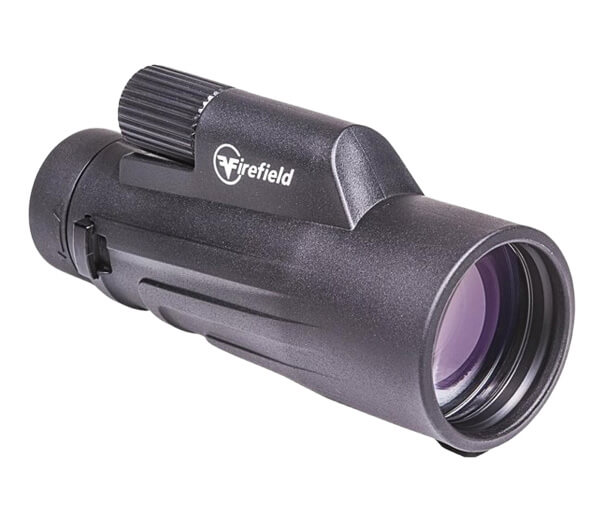
The Firefield Siege is a straightforward, no-nonsense monocular. It has good specs for its price, but it does not stand out in any single area.
The Good and The Bad
- Pros: Good low-light performance, has a tripod mount, solid build.
- Cons: Heavier than others, fewer user reviews to build trust.
Design and Feel: Built for a Job
The Firefield feels solid and has a good rubber coating. It is a little heavier than the Gosky Titan, which is something to consider for long trips. A very useful feature is the built-in tripod adapter. This allows you to mount it on a camera tripod for completely shake-free viewing, which is great for long observation sessions. It is also IP67 waterproof, meaning it is well-protected against dust and water.
Picture Quality: Good in the Dim Times
The 10×50 configuration is a classic for a reason. The 50mm lens gathers plenty of light. In our low-light tests, the image was bright and usable, performing similarly to the Gosky Titan. The picture was clear, though we noticed a bit more color fringing than on the Vortex Solo. The sharpness was good in the center but softened noticeably towards the edges of the view.
A Dependable Outdoor Tool
This is a monocular you can take hunting or camping without worry. The weatherproofing and tripod mount make it a practical choice for serious outdoor use. The twist-up eyecup is comfortable for eyeglass wearers. However, its weight and simpler accessories make it feel more like a tool and less like a refined product compared to our top picks.
Who Should Buy the Firefield Siege?
Choose the Firefield if you specifically need a tripod-mountable monocular for hunting or spotting and you are on a budget. It is a functional and durable option, but it lacks the polished feel and stellar warranty of the Vortex.
6. Aurosports 10-30×40: The Best for Changing Magnification
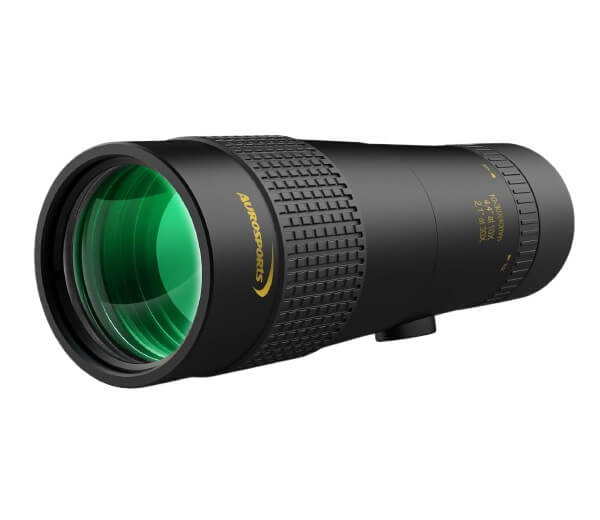
The Aurosports monocular offers something unique: the ability to zoom from 10x to 30x power. This sounds great, but our tests showed there is a big trade-off.
The Good and The Bad
- Pros: Can zoom to high 30x power, very compact when closed.
- Cons: Picture gets dark and narrow at high zoom, can be very shaky.
Design and Feel: Small but Complex
The Aurosports is the smallest monocular when it is collapsed. This makes it very easy to pack. However, the zoom mechanism adds complexity. To change the power, you stretch or rotate the main tube. This action did not feel as smooth or precise as the simple focus wheel on other models. It claims to be waterproof and fog-proof, which is a good feature at this price.
Picture Quality: A Disappointing Zoom
At 10x magnification, the picture is acceptable. It is a little dim because the objective lens is only 40mm, but it is usable. However, as you zoom in to 20x and then to 30x, the problems become clear. The field of view becomes very narrow, like looking through a drinking straw. The image also becomes significantly darker and less sharp. At 30x, the image was so dark and shaky that it was very difficult to use without a tripod.
More Power is Not Always Better
The idea of a zoom monocular is appealing. You could use 10x for a wide view and then zoom in to see a detail. In reality, the poor performance at high zoom makes it mostly a 10x monocular with a feature you will rarely use. The small 40mm lens also means it struggles in low light more than models with 50mm or larger lenses.
Who Should Buy the Aurosports Zoom?
Only consider the Aurosports if you absolutely need variable magnification for a specific task and you always plan to use it with a tripod. For almost everyone else, a fixed-power monocular like the Vortex or Gosky will provide a much better viewing experience.
Check also – Best Monoculars for Long Distance Reviews
Which One Wins? A Comparison
Let’s put the top models directly against each other to answer some common questions.
Vortex Solo vs. Gosky Titan: Which Gives a Better View?
This is a battle between the sharpest image and the most features.
| Feature | Vortex Solo 10×36 | Gosky Titan 12×50 |
| Our Rating | 4.8/5 | 4.3/5 |
| Best For | Overall quality and durability | Smartphone photography |
| Picture Sharpness | Winner. Cleaner, sharper with less color distortion. | Very good, but not as pure as the Vortex. |
| Brightness | Good for its size. | Winner. The 50mm lens gathers more light. |
| Smartphone Use | Requires a separate adapter. | Winner. Includes the best adapter in the test. |
| Warranty | Winner. Unlimited and unconditional. | Standard warranty. |
The Vortex Solo 10×36 wins for its superior optical quality and incredible warranty. But the Gosky Titan 12×50 is the clear winner if you want to use your smartphone.
High-Power Battle: Gosky Titan vs. Pankoo
Both offer 12x power, but which one is the better buy?
| Feature | Gosky Titan 12×50 | Pankoo 12×60 |
| Our Rating | 4.3/5 | 4.2/5 |
| Best For | A balanced, high-power view | Maximum brightness on a budget |
| Brightness | Very bright. | Winner. The 60mm lens is the brightest. |
| Color Fringing | Minor. | Loser. Noticeable purple fringes. |
| Included Adapter | Winner. High-quality and easy to use. | Good, but not as refined. |
| Size & Weight | Large. | Larger and Heavier. |
The Gosky Titan 12×50 is the better all-around monocular due to its better image quality. The Pankoo 12×60 wins only if your top priority is the absolute brightest image for the lowest price.
Who Should Buy What Budget Monocular? A Guide Based on Your Needs
Here is our final, simple advice to help you choose.
For the Birdwatcher and Wildlife Enthusiast
You need a sharp picture and good close focus. The Vortex Optics Solo 10×36 is your best choice. Its clarity will help you see feather details, and its durability means it can handle being outdoors.
For the Traveler, Hiker, and Concert-Goer
You need something portable and easy to use. For the best quality, choose the Vortex Optics Solo 10×36. If you want the smallest and lightest option and don’t need high power, the ROXANT Grip Scope is a good pick.
For the Hunter and Long-Range Spotter
You need power and weatherproofing. The Gosky Titan 12×50 offers great brightness and power. If you know you will be using a tripod, the Firefield Siege 10×50 is a solid, budget-friendly option with a dedicated tripod mount.
For the Budget-Conscious Buyer
You want the most value for your money. The Pankoo 12×60 gives you the highest power and brightest image for a very low price, though with some optical flaws. If you can spend a little more, the Vortex Solo is a much better long-term investment.
People Also Ask
What is the best all-purpose magnification for a monocular?
Our tests show that 8x or 10x is the best for most people. This range provides a good balance between bringing things closer and keeping the image steady and bright. The Vortex Solo 10×36 is a perfect example of this.
Are more expensive monoculars really that much better?
Yes, but only up to a point. The jump from the Pankoo to the Vortex Solo is a huge improvement in picture quality and build. The difference is very easy to see. You are paying for better glass, better coatings, and a more durable body.
Can I use a monocular with my smartphone?
Yes, but you need a smartphone adapter. The Gosky Titan comes with the best one we tested. You can buy separate adapters for other models like the Vortex Solo, but the results may not be as consistent.
How important is waterproofing?
For any outdoor use, it is very important. Waterproof and fog-proof (nitrogen purged) monoculars like the Vortex, Gosky, and Pankoo will not be damaged by rain or fog up inside the lens, which can ruin the device.
Our Recommended Budget Monocular for Most Users
After all the tests, hikes, and rainy-day trials, the choice is clear.
The Vortex Optics Solo 10×36 is the best budget monocular you can buy.
It does not have the highest power. It does not come with a smartphone adapter. But what it offers is a perfect, no-compromise experience where it matters most. The image is crystal clear, the build is tough enough for real adventures, and the unlimited, unconditional warranty is a promise that it will be your companion for years to come.
For the person who wants one reliable tool they can always count on, the Vortex Solo is the undeniable winner.
